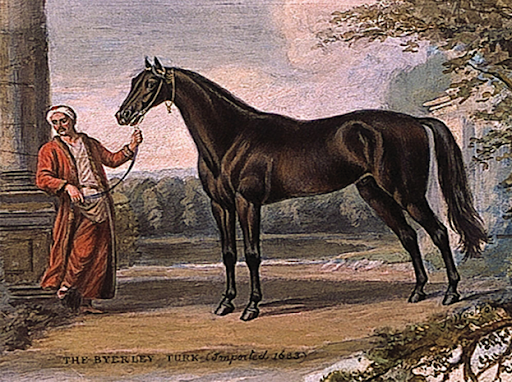He is known as the father of thoroughbred racehorses in equestrian history: Who is Byerley Turk?
Byerley is one of the three stallions who started the modern thoroughbred horse racing tradition. Two other famous stallions are Godolphin Arabian and Darley Arabian.

The adventure of the Byerley Turkish horse, famous as the father of thoroughbred racehorses in equestrian history, is a very interesting story. This journey, from battlefields to racetracks, from the Ottoman Empire to England, reveals how such a fast and agile horse gained fame and his contribution to equestrian races.
There are different records about the story of Byerley Turk, whose original name was Azaraks. According to the most well-known of these records, we see the name of Azaraks as the war horse during a series of wars fought by the Ottoman Empire with the united European powers after the Second Siege of Vienna.
The Byerley Turk (c. 1680 – c. 1703), also spelled Byerly Turk, was the earliest of three stallions that were the founders of the modern Thoroughbred horse racing bloodstock (the other two are the Godolphin Arabian and the Darley Arabian).
Azaraks, who is estimated to have been 8 years old during a battle of these wars in 1688, was taken from an Ottoman officer captured in Buda by Robert Byerly, a captain in one of the troops of King William III of the House of Orange. And his name is changed to Byerley Turk, after his owner.
Since it was estimated that he was 8 years old during that war, Byerley Turk's birth date was recorded as 1679. In 1689, Captain Byerley used this horse as a war horse during King William's War in Ireland.
In 1690, Byerley Turk entered the records by winning the horse race in Northern Ireland. During the Battle of the Boyne in the same year, Byerley continued to serve the Turkish captain Byerley.
Byerley Turk's breeding history begins in England, on the family farm at Middridge Grange in Durham. He was later bred as a breeding horse at Byerley's Goldsborough Hall farm near Knaresborough in Yorkshire and became the father of many new racehorses. During both periods of his breeding career, he sired several famous bred mares and his lineage continued through these mares.
Robert Byerley, owner of Byerley Turk, was born in 1660, the son of Colonel Anthony Byerley of Middridge Grange, a cavalry officer under Charles I. Robert Byerley rose in rank to become a Captain, and in 1688 he became a Colonel. He also married Mary, granddaughter of Philip (4th) Lord Wharton, a leading horse breeder of the time. Byerley later moved from Middridge Grange to Goldsborough Hall and died in May 1714, to be buried at Goldsborough. The Goldsborough estate was sold to the Lascelles family around 1766 upon the death of Elizabeth Byerley.
As Wootton's portrait shows, the Byerley Turk was an unmarked, dark brown horse with a Karaman appearance, unlike other thoroughbred Arabian stallions. He was very strong and most of his offspring were recorded to be brown or black like himself. It is recorded that during one of the wars, he saved his owner by kidnapping him from enemy forces due to his strength and agility. Byerley Turk has been described as a horse that is the most beautiful representative of elegance, courage, and speed. In England's glorious equestrian history, Byerley Turk's name is frequently mentioned, he has become one of the best examples of horses and has set the standards.
Byerley Turk's most notable racing son was Basto, a dark bay colt bred by Sir William Ramsden. Basto was a very good stallion and his ownership was later sold to the Duke of Devonshire at Chatsworth in Derbyshire in 1723. Wootton's portrait of Basto shows him as an almost black horse with no white markings, similar in appearance to his master.
But Byerley Turk's most influential son was Jigg, who was described by the General Stud Book as a middling horse, who was breeding country mares in Lincolnshire. Jigg's son Partner was a tremendous runner and an extremely effective sire, but he was Partner's son Tartar and his son Herod, who carried Beverly Turk's line into the future, who are recorded as the ancestors of great racehorses in the new generations. The lines continuing from many other young horses led by Beverly Türk have brought many successful horses to the history of horse riding.
The genes of Beverley Türk, who has written his name in golden letters in equestrian history as the ancestor of many thoroughbred racehorses for generations, have influenced today's horses more than any other thoroughbred racehorse. This horse, which died in 1704, is the most famous horse in the history of world equestrianism, whose story is wondered by everyone interested in equestrianism and has roots in Arabian and Persian horses. The fact that the story of this horse dates back to the Ottoman Empire is proof that the Ottoman civilization served as a bridge between Europe and Asia in the field of equestrianism. Beverley Türk has been revealing his beauty and aesthetic structure for 300 years with his many portraits that have survived to this day.
